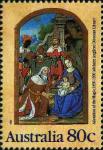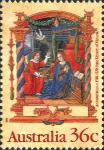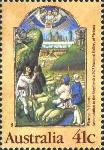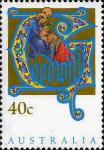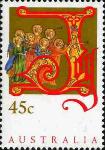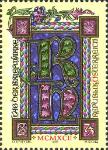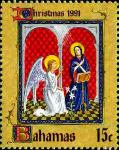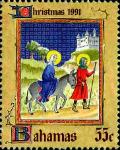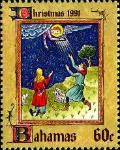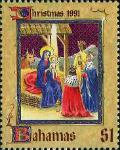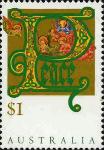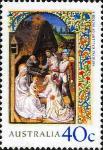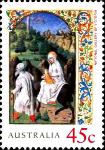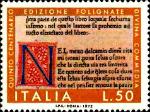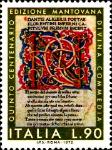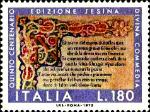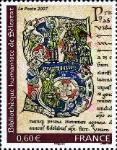| 16a--Illuminations This page is still under construction--please check back again later |
The word “illumination” is based upon the Latin illuminare, that is, “to enlighten or illuminate.” In a manuscript book, an
illumination is an embellishment on a page that uses luminous colors, especially gold and silver. A “miniature” is also
sometimes referred to as an illumination. An antiquated use of the word refers to the coloring of maps and prints.
An “illuminator” is the artist who produces an illumination. On occasion the illuminator was also the scribe who wrote
the text of the manuscript. During late antiquity, illuminators were a professional class unto themselves, but by the
Middle Ages, they worked on a team as part of an ecclesiastical scriptorium, or they were attached to a royal court.
Itinerant illuminators may also have worked during the Middle Ages. Although monastic scriptoria never really
disappeared, as universities developed in the late 13th century, illuminators were most often based in urban centers,
often living in the same neighborhoods and frequently collaborating.
Illuminators could be male or female and members of monastic or minor clerical orders. After about 1200 C.E., however,
they were increasingly lay people. Illuminators continued to practice their art, although to a limited extent, after the mid-
15th century and the introduction of printing from moveable metal type, sometimes embellishing early printed books, and
often working in the field of professional calligraphy.
(Definitions of Illumination and Illuminator are based upon Michelle P. Brown’s Understanding Illuminated Manuscripts: A Guide to Technical Terms.
Malibu, CA: The J. Paul Getty Museum, in association with The British Library [1994), pages 69-71.)
illumination is an embellishment on a page that uses luminous colors, especially gold and silver. A “miniature” is also
sometimes referred to as an illumination. An antiquated use of the word refers to the coloring of maps and prints.
An “illuminator” is the artist who produces an illumination. On occasion the illuminator was also the scribe who wrote
the text of the manuscript. During late antiquity, illuminators were a professional class unto themselves, but by the
Middle Ages, they worked on a team as part of an ecclesiastical scriptorium, or they were attached to a royal court.
Itinerant illuminators may also have worked during the Middle Ages. Although monastic scriptoria never really
disappeared, as universities developed in the late 13th century, illuminators were most often based in urban centers,
often living in the same neighborhoods and frequently collaborating.
Illuminators could be male or female and members of monastic or minor clerical orders. After about 1200 C.E., however,
they were increasingly lay people. Illuminators continued to practice their art, although to a limited extent, after the mid-
15th century and the introduction of printing from moveable metal type, sometimes embellishing early printed books, and
often working in the field of professional calligraphy.
(Definitions of Illumination and Illuminator are based upon Michelle P. Brown’s Understanding Illuminated Manuscripts: A Guide to Technical Terms.
Malibu, CA: The J. Paul Getty Museum, in association with The British Library [1994), pages 69-71.)
